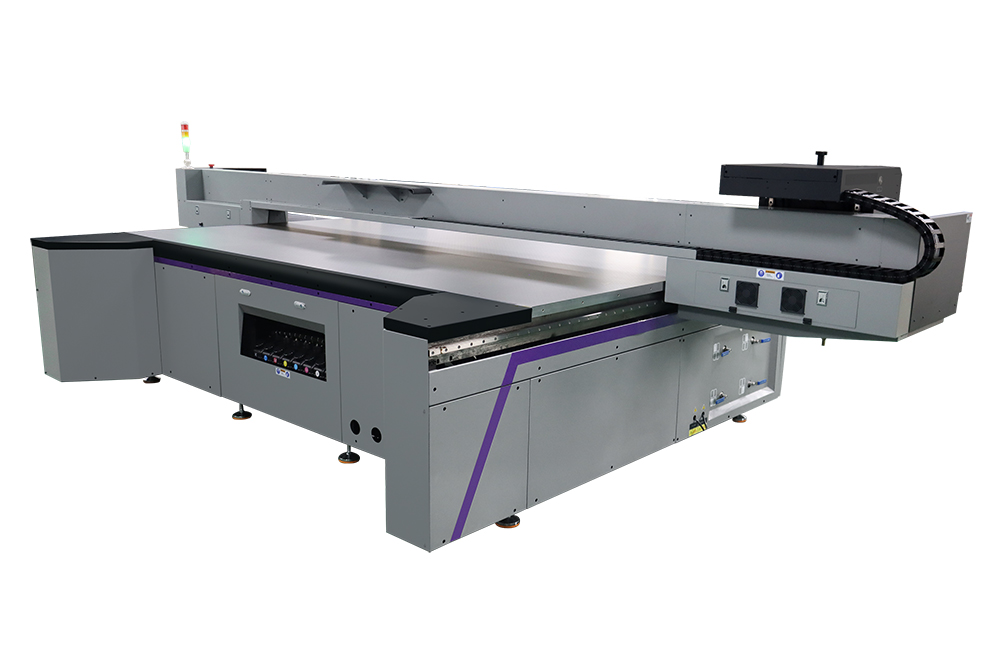UV Flatbed Printer: An Introduction to Print Head Maintenance
UV Flatbed Printer: An Introduction to Print Head Maintenance
UV flatbed printers have revolutionized the printing industry, offering unparalleled versatility and precision in reproducing high-quality images on various materials. These printers utilize UV-curable inks that instantly cure when exposed to ultraviolet light, resulting in vibrant, durable prints. At the heart of this technology lies the print head, a critical component responsible for depositing ink onto the substrate. To ensure optimal performance and longevity of your UV flatbed printer, proper maintenance of the print head is essential. This article provides an introduction to print head maintenance, covering key aspects such as understanding the print head, routine maintenance practices, troubleshooting common issues, and best practices for extending its lifespan.

Understanding the Print Head
The print head is a sophisticated device that contains numerous nozzles or jets, each capable of ejecting minute droplets of ink onto the printing surface. In UV flatbed printers, piezoelectric or thermal technology is commonly used to control ink ejection. Piezoelectric print heads use crystal vibrations to propel ink, while thermal print heads rely on heat to create bubbles that force ink out. Both technologies require precise calibration and maintenance to ensure consistent ink flow and print quality.
Print heads are designed to be durable but are susceptible to wear and tear due to continuous use and exposure to ink, UV light, and dust particles. Regular maintenance is crucial to prevent clogging, misfires, and other issues that can compromise print quality and increase downtime.
Routine Maintenance Practices
Cleaning the Print Head: Regular cleaning is vital to remove ink residue, dust, and other contaminants that can accumulate on the nozzles. Manufacturers often provide specific cleaning solutions and instructions. It’s important to follow these guidelines carefully, as using the wrong cleaning agent or method can damage the print head.
Flushing the Ink System: Flushing the ink system with a cleaning solution helps remove any residual ink that could clog the nozzles. This process should be performed periodically, especially when switching ink colors or types, to prevent color contamination and ensure smooth ink flow.
Calibration and Alignment: Print head calibration ensures that ink is deposited accurately on the printing surface. Misalignment can lead to banding, blurring, or other print quality issues. Most UV flatbed printers offer built-in calibration tools, and it’s recommended to perform calibration routines regularly.
Capping and Wiping: When not in use, the print head should be capped to prevent dust and debris from entering the nozzles. Additionally, wiping the print head with a lint-free cloth before capping can further reduce the risk of contamination.
Moisture Control: Maintaining proper humidity levels in the printing environment is crucial. Excessive moisture can lead to condensation on the print head, affecting ink flow and print quality.
Troubleshooting Common Issues
Clogged Nozzles: One of the most common issues is clogged nozzles, which can result in missing dots or lines in the print. Cleaning the print head as per the manufacturer’s instructions usually resolves this problem.
Ink Misfires: If the print head fails to eject ink properly, it can cause banding or streaking. This issue may be due to dried ink or debris in the nozzles. Flushing the ink system and cleaning the print head can help restore proper ink flow.
Print Head Alignment Issues: Misalignment can manifest as blurry or distorted prints. Running the printer’s calibration routine should correct the issue. If the problem persists, it may require professional servicing.
Ink Leakage: Leakage can occur due to worn-out seals or clogged ink channels. Inspecting the print head for damage and replacing faulty components is necessary. Regular maintenance can help prevent such issues.
Best Practices for Extending Print Head Lifespan
Quality Ink and Cleaning Solutions: Always use inks and cleaning solutions recommended by the printer manufacturer. Using substandard products can cause premature wear and tear.
Proper Storage: When the printer is not in use for an extended period, store it in a clean, dust-free environment. Ensure the print head is capped and the printer is covered to protect it from dust and moisture.
Regular Maintenance Schedule: Establish a maintenance schedule and stick to it. Regular cleaning, flushing, and calibration can significantly extend the print head’s lifespan.
Training and Expertise: Ensure operators are trained in proper print head maintenance procedures. Mishandling can lead to damage, so it’s essential to have a skilled team managing the printer.
Prompt Issue Resolution: Don’t ignore any signs of print head issues. Addressing problems promptly can prevent them from escalating and causing more extensive damage.
Conclusion
The print head is a critical component of a UV flatbed printer, directly impacting print quality and productivity. By understanding its operation, implementing routine maintenance practices, troubleshooting common issues promptly, and adopting best practices for extending its lifespan, you can ensure your printer operates at peak performance for years to come. Regular maintenance not only enhances print quality but also reduces downtime and operational costs, making it a worthwhile investment for any printing business or individual using UV flatbed technology.
